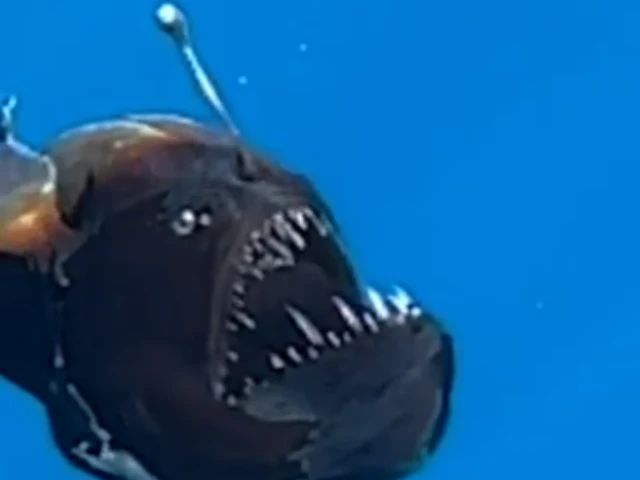WATCH: Rare black seadevil fish appears on ocean surface
Rare footage of black seadevil anglerfish swimming in shallow waters astonishes researcher

A team of researchers in the Canary Islands has captured rare footage of a black seadevil anglerfish, a deep-sea species, swimming near the ocean’s surface—a sight that has been recorded only once before.
The black seadevil (Melanocetus johnsonii), known for its bioluminescent lure and fearsome appearance, typically inhabits the ocean’s depths, between 650 and 6,500 feet.
The fish was filmed by wildlife photographer David Jara aboard the vessel Glaucus, during a rare encounter that lasted for about an hour.
“It was like a dream come true,” said Jara, a marine wildlife photographer with the NGO Condrik Tenerife. “I had seen these creatures in books as a child, and I never thought I would actually capture one on film.”
The anglerfish, which is about six inches long, was filmed swimming actively, despite being a species typically adapted to extreme pressures and known for being ambush predators that remain relatively stationary in deep water.
This unexpected behaviour astonished experts, who were excited by the rarity of the sighting.
“When I first saw the video, I honestly didn’t believe what I was seeing,” said Kory Evans, a fish biologist at Rice University. “I thought it was A.I.”
Bruce Robison, a senior scientist at the Monterey Bay Aquarium Research Institute, added that such sightings are extremely rare. He was the one who captured the only previous footage of a living black seadevil in Monterey Bay in 2014, at a depth of 1,900 feet.
The exact reason why the black seadevil ventured to the surface remains unclear, but scientists believe it may have been due to changes in water temperature, pressure, or a prey-driven movement.
Despite their intimidating looks, Evans notes that black seadevils are “mostly soft and squishy,” highlighting their surprising contrast to their fearsome image.
This sighting is a significant moment for marine biology, providing further insight into one of the ocean’s most mysterious creatures.




1737365534-0/sidra--(7)1737365534-0-100x90.webp)

















COMMENTS
Comments are moderated and generally will be posted if they are on-topic and not abusive.
For more information, please see our Comments FAQ